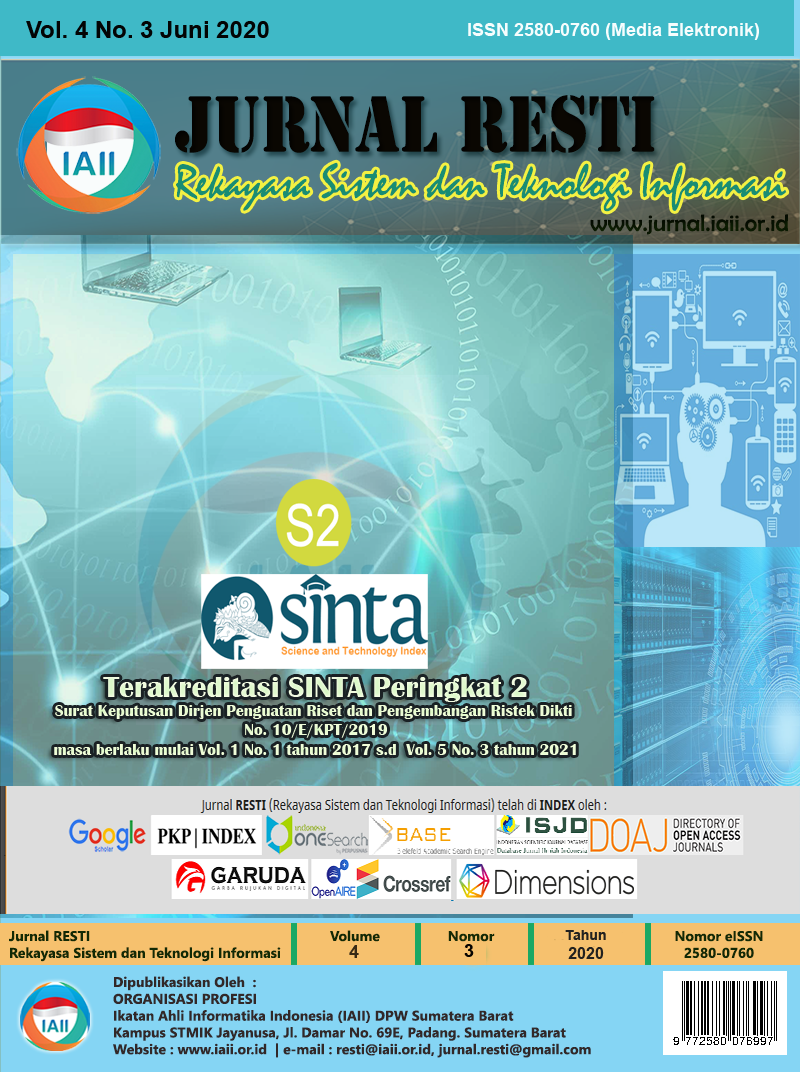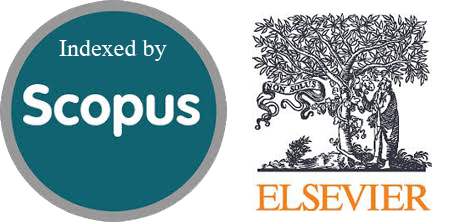Effectiveness of Sniffer Using Natural Language in Learning Computer Network Traffic
Efektivitas Sniffer Menggunakan Natural Language dalam Mempelajari Traffic Jaringan Komputer
Abstract
Computer networks are currently very active in the development of technology that is around us. Seeing this, of course knowledge of the network will be needed if there is a problem on the network. Scapy is a Python module that allows for sending, sniffing and dissecting a packet on a network. This capability allows users to create an application that can dissect how the workings of a network packet. Researchers will create a protocol traffic learning application on a computer network using Scapy and natural language to convey the results of the ongoing sniffing process. The application uses natural language to convey the translation of the sniffing process. The translation result of the sniffing process by using the natural language of this application is expected to be effective and can facilitate and make users understand and learn about the work process of a network packet. To measure the effectiveness of the use of natural language for the translation of the sniffing process a questionnaire was distributed to students of the SMKN 1 Denpasar school majoring in Computer and Network Engineering. The results of the distribution of the questionnaire were then calculated using a Likert scale and then the results obtained that the original results of the sniffing process got a Likert scale value of 37%. While the results of sniffing that have been translated get a value of 73%. This shows respondent better understands the results that have been translated compared to the original results that have not been translated.
Downloads
References
A. Pane and M. Darwis Dasopang, “Belajar Dan Pembelajaran,” FITRAHJurnal Kaji. Ilmu-ilmu Keislam., vol. 3, no. 2, p. 333, 2017.
Yuliana, Bab 3 : Pengolahan Bahasa Alami.[Online] Tersedia di : http://yuliana.lecturer.pens.ac.id/Kecerdasan%20Buatan/Buku/Bab%205%20Natural%20Language%20Processing.pdf [Accessed 13 April 2020].
Y. Icha, “Pembentuk Serta Pola Kalimat : Pengertian, Unsur Dan Contohnya Lengkap,” Ruangguru.Co.Id, 2019. [Online]. Available: https://www.ruangguru.co.id/pengertian-dan-contoh-unsur-pembentuk-serta-pola-kalimat-lengkap/. [Accessed: 05-May-2020].
M. J. N. Yudianto, “Jaringan Komputer dan Pengertiannya,” Ilmukomputer.Com, pp. 1–10, 2014.
P. Saxena, “Analysis of Network Traffic by using Packet Sniffing Tool : Wireshark,” Int. J. Adv. Res. Ideas Innov. Technol., vol. 3, no. 6, pp. 804–808, 2017.
C. Gandhi, G. Suri, R. P. Golyan, P. Saxena, and B. K. Saxena, “Packet Sniffer – A Comparative Study,” Int. J. Comput. Networks Commun. Secur., vol. 2, no. 5, pp. 179–187, 2014.
A. Siswanto, A. Syukur, E. A. Kadir, and Suratin, “Network traffic monitoring and analysis using packet sniffer,” Proc. - 2019 Int. Conf. Adv. Commun. Technol. Networking, CommNet 2019, pp. 1–4, 2019.
V. Elamaran et al., “Exploring DNS, HTTP, and ICMP Response Time Computations on Brain Signal/Image Databases using a Packet Sniffer Tool,” IEEE Access, vol. 6, pp. 59672–59678, 2018.
P. Goyal and A. Goyal, “Comparative study of two most popular packet sniffing tools-Tcpdump and Wireshark,” in Proceedings - 9th International Conference on Computational Intelligence and Communication Networks, CICN 2017, 2018, vol. 2018-Janua, pp. 77–81.
M. Khan, S. Alshomrani, and S. Qamar, “Investigation of DHCP Packets using Wireshark,” Int. J. Comput. Appl., vol. 63, no. 4, pp. 1–9, 2013.
M. Kumar and M. T. Scholar, “Tcp & Udp Packets Analysis Using Wireshark,” Int. J. Sci. Eng. Technol. Res., vol. 4, no. 7, pp. 2470–2474, 2015.
P. Biondi, “Scapy Documentation,” vol. 469, no. 4, pp. 155–203, 2017 [Online] Tersedia di : https://scapy.readthedocs.io/_/downloads/en/latest/pdf/ [Accessed 2 Februari 2020].
Editor, “Pengertian Skala Likert dan Contoh Cara Hitung Kuesionernya,” diedit.com, 2020. [Online]. Available: https://www.diedit.com/skala-likert/ [Accessed 2 Februari 2020].
S. Jonnalagadda, “Introduction to TCP / IP Protocol Suite Srinivas Jonnalagadda , Ph . D .,” no. April, 2019.
F. T. Al-Dhief et al., “Performance Comparison between TCP and UDP Protocols in Different Simulation Scenarios,” Int. J. Eng. Technol., vol. 7, no. 4.36, pp. 172–176, 2018.
W. Goralski, “Dynamic Host Configuration Protocol,” in The Illustrated Network, Elsevier, 2017, pp. 563–586.
Copyright (c) 2020 Jurnal RESTI (Rekayasa Sistem dan Teknologi Informasi)

This work is licensed under a Creative Commons Attribution 4.0 International License.
Copyright in each article belongs to the author
- The author acknowledges that the RESTI Journal (System Engineering and Information Technology) is the first publisher to publish with a license Creative Commons Attribution 4.0 International License.
- Authors can enter writing separately, arrange the non-exclusive distribution of manuscripts that have been published in this journal into other versions (eg sent to the author's institutional repository, publication in a book, etc.), by acknowledging that the manuscript has been published for the first time in the RESTI (Rekayasa Sistem dan Teknologi Informasi) journal ;








